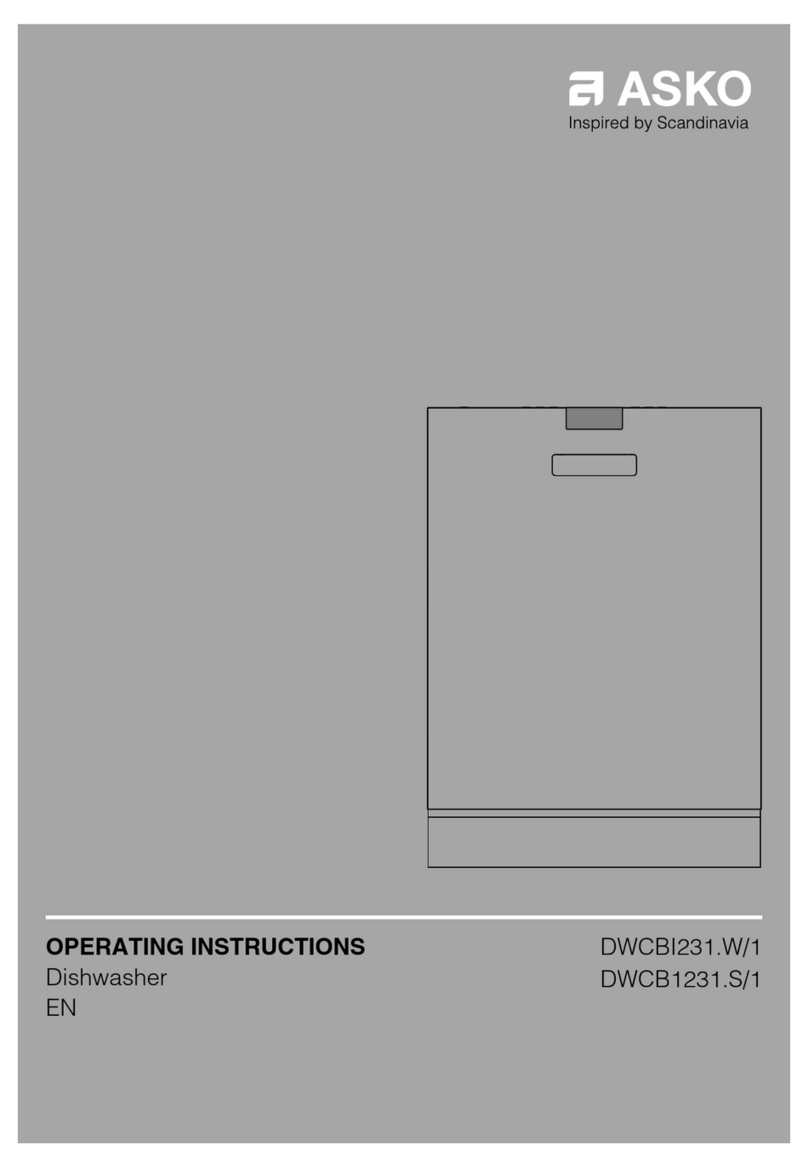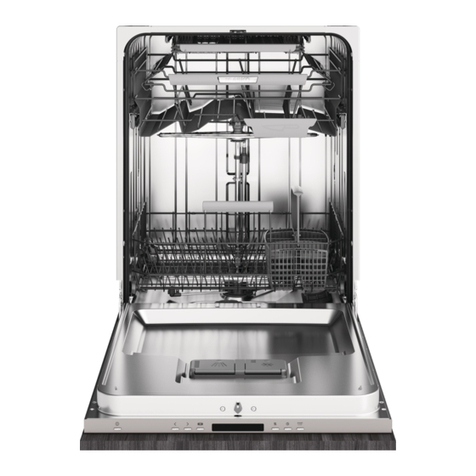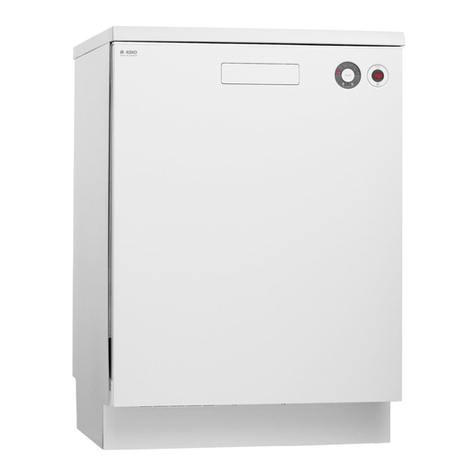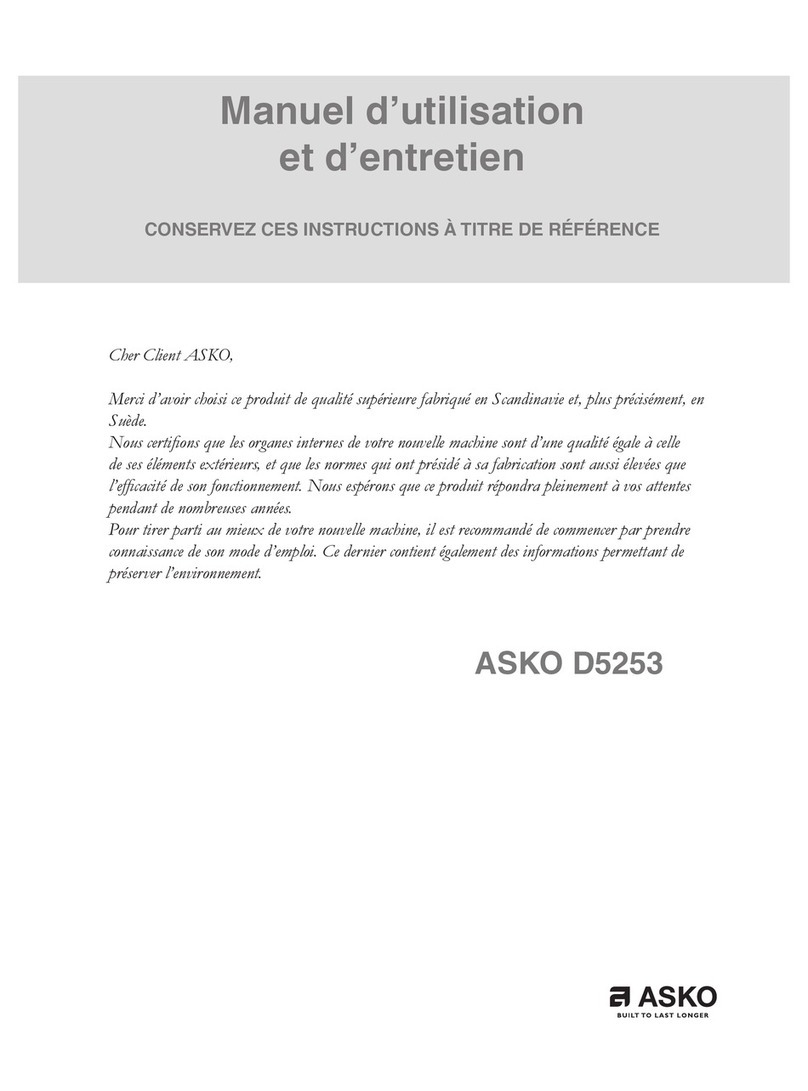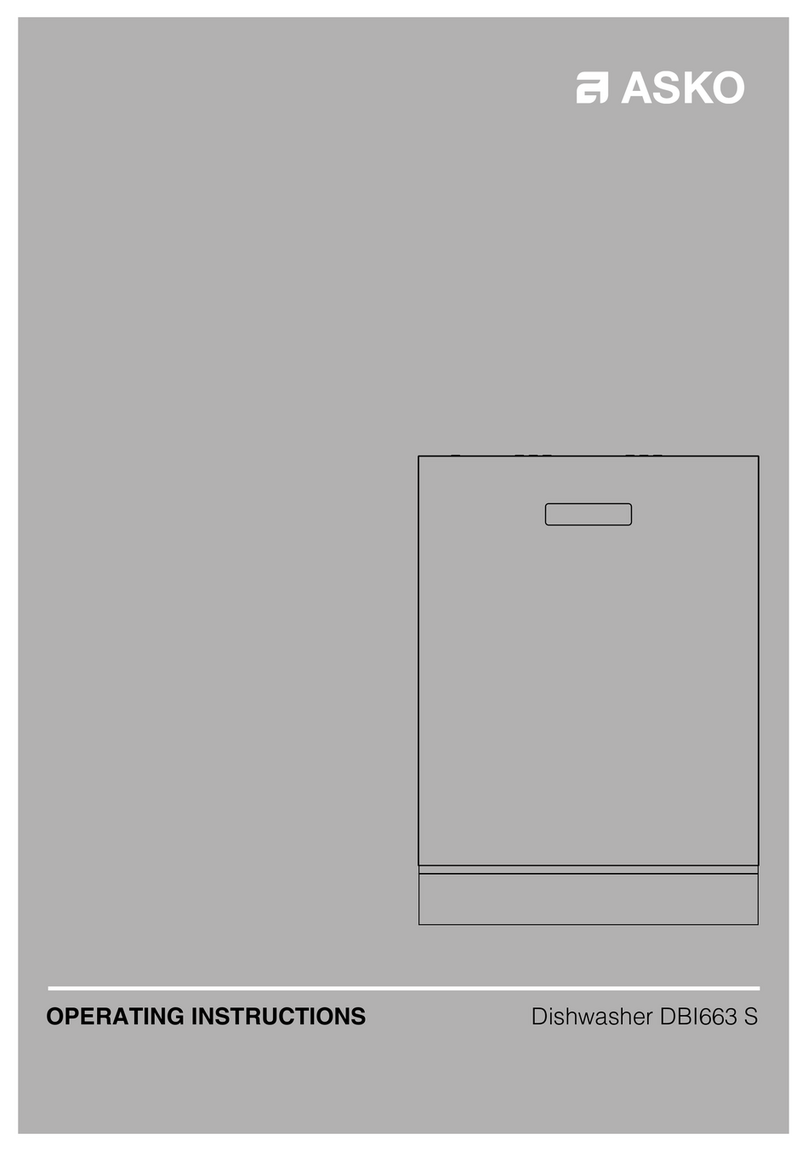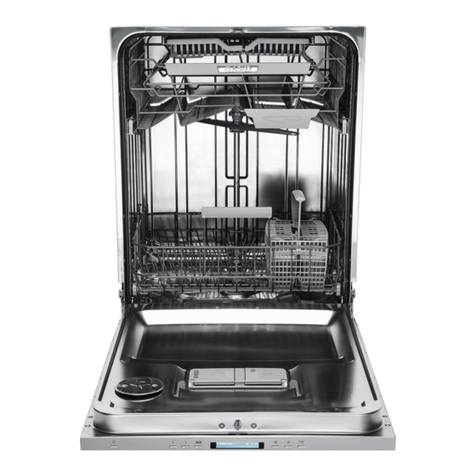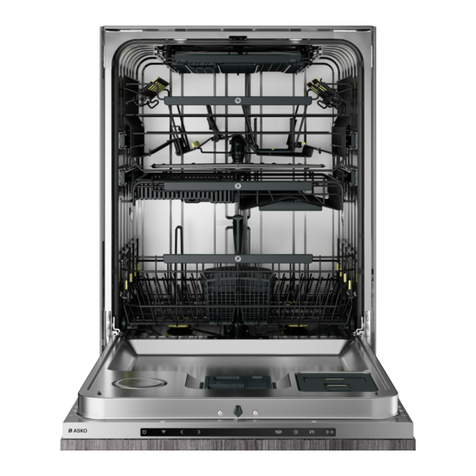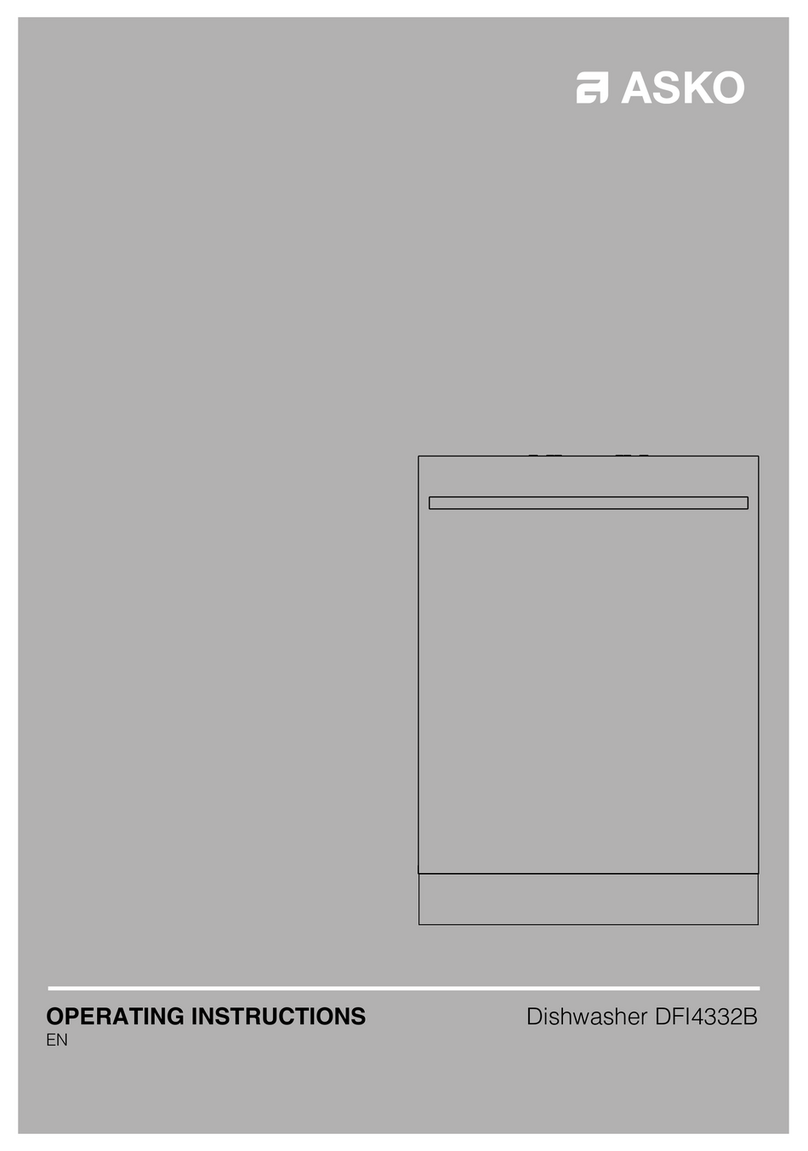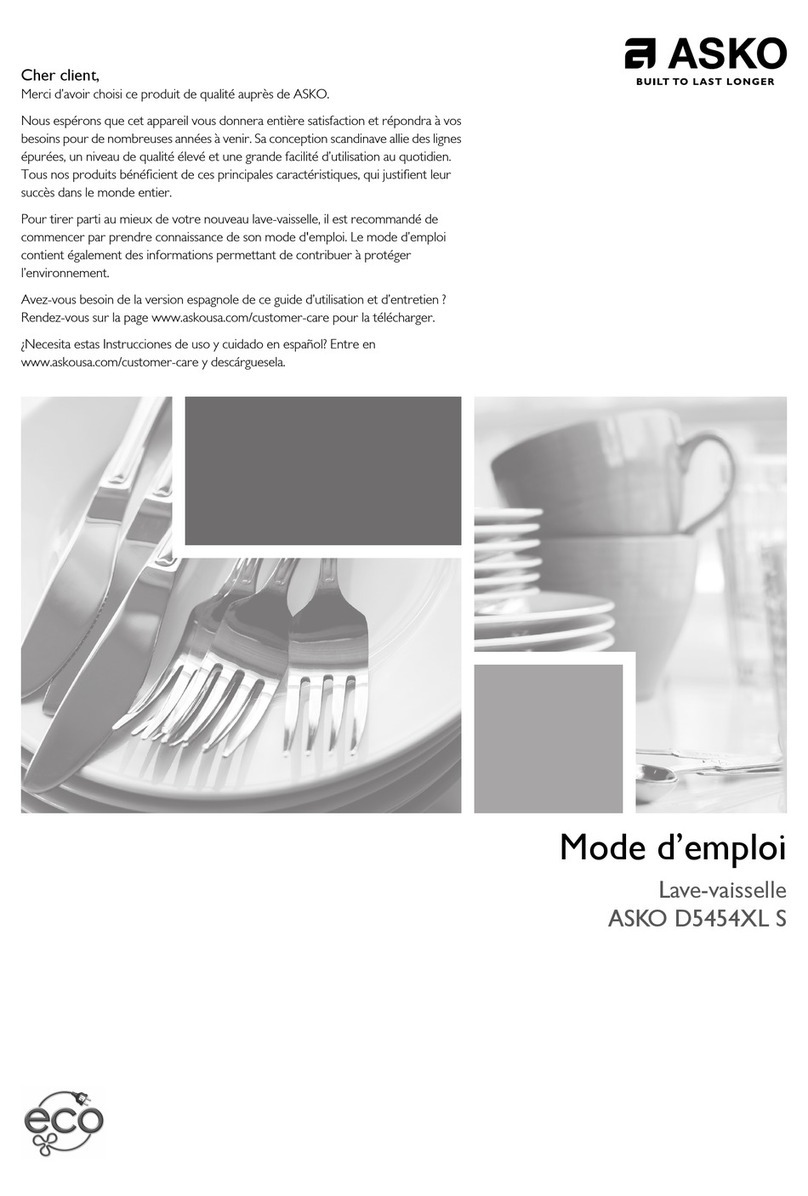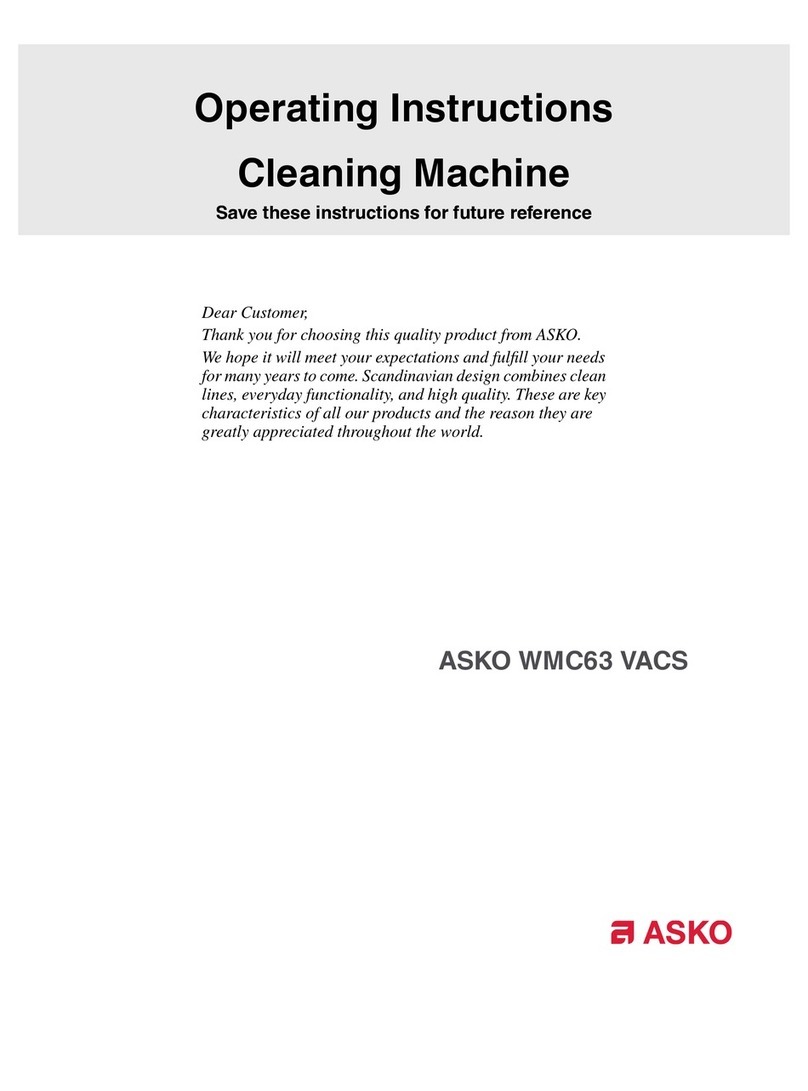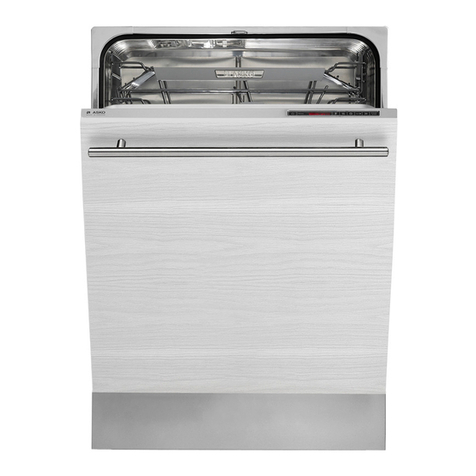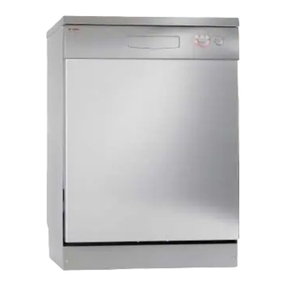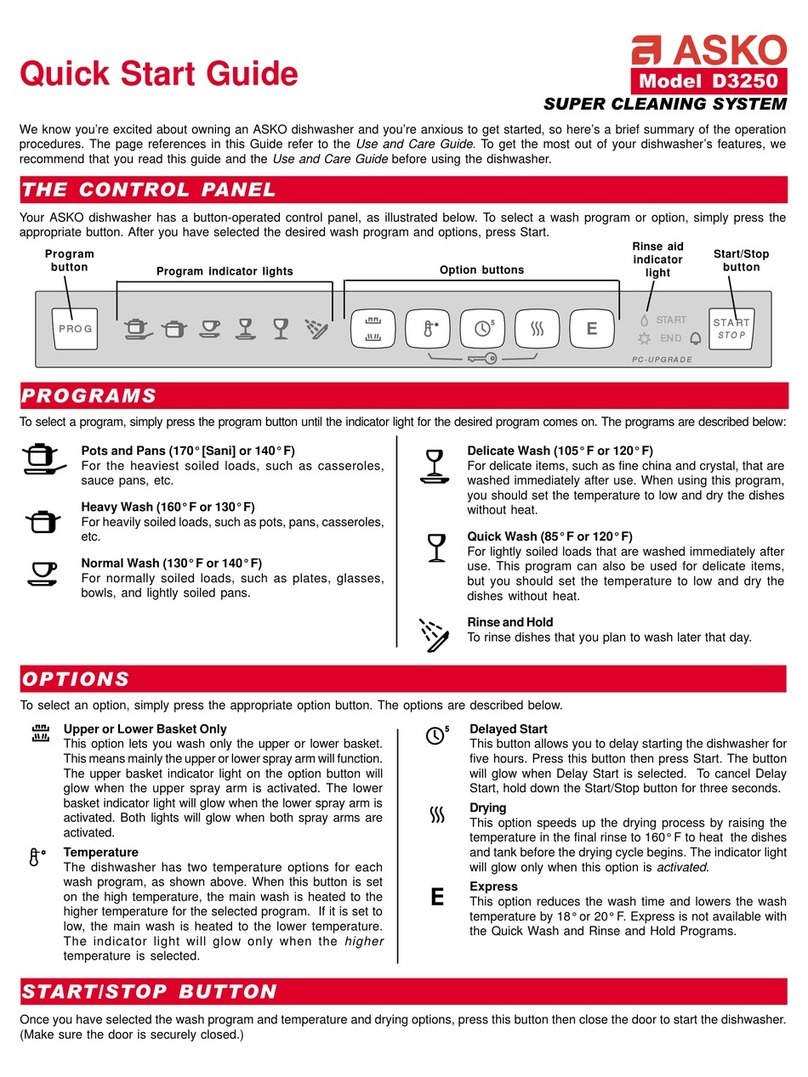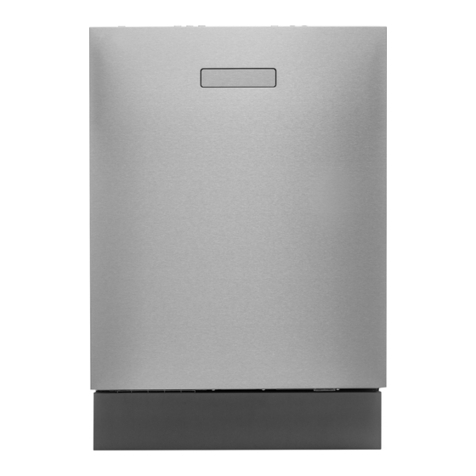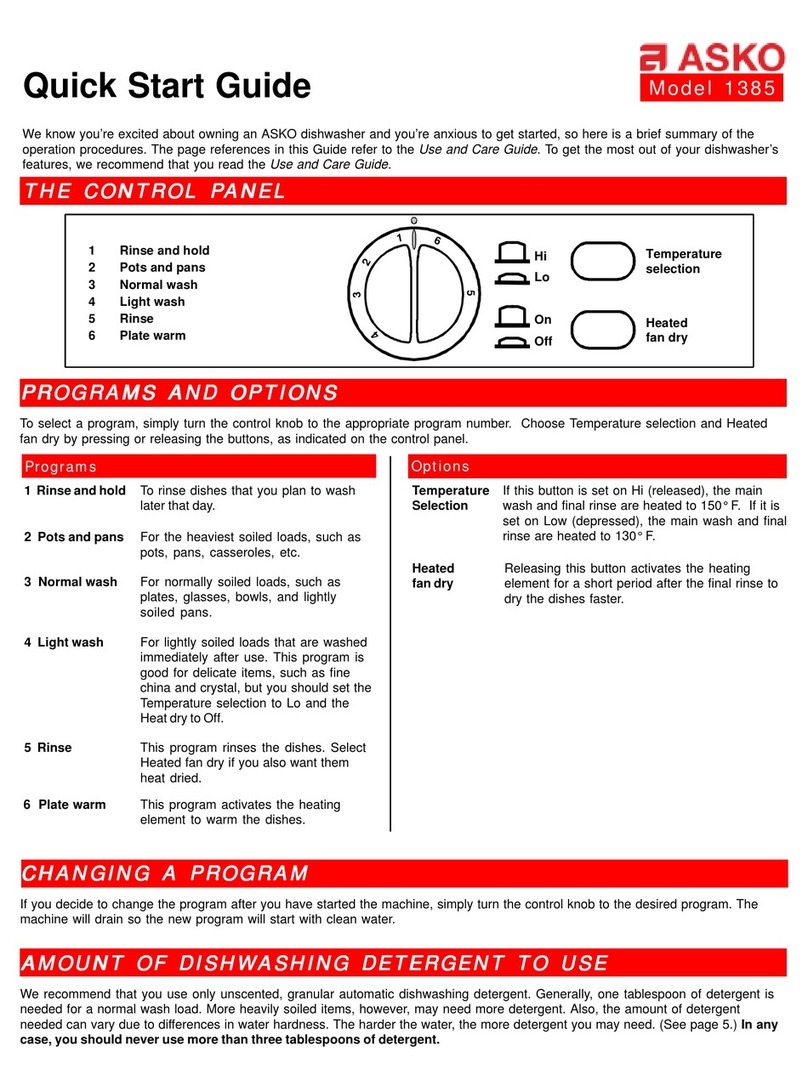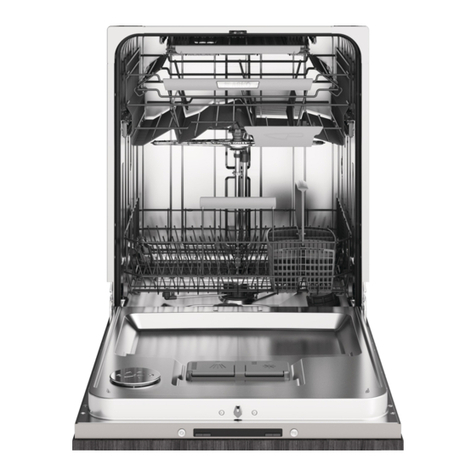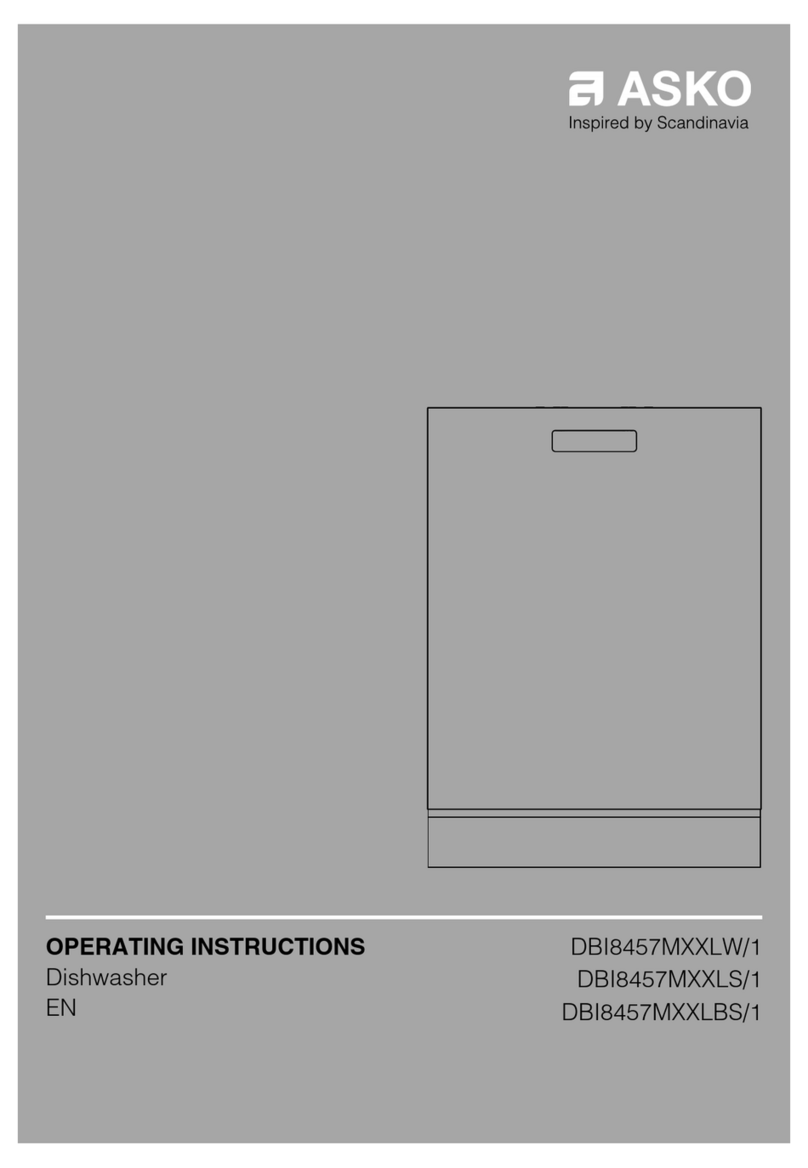
Selecting Options
Press Option/Set and then navigation button <or >to select an
option. Confirm your selection by pressing Option/Set.
The available options depend on the selected programme. (Exit
the menu by pressing navigation button <or >until Exit? appears
on the display. Confirm your selection by pressing Option/Set.)
Drying: Short/Long
A higher temperature in the final rinse and a longer drying phase
improves the drying result if you activate the option. The energy
consumption is then slightly increased. When you start a
programme, the option selected is saved for the next time you
run the same programme. To save energy, select Drying: Short.
The option can be selected in the following programmes: Heavy
wash, Daily wash, Eco wash, Quick wash, Lower half wash, Upper
half wash, Hygiene wash.
Set time (Time program)
You can choose a programme time between 15 minutes and 2
hours 30 minutes.
Time saver: On/Off
This option shortens the programme time, but uses more energy
and water.
The option can be selected in the following programmes: Heavy
wash, Upper half wash, Lower half wash.
Delayed start: 1-24 hours
When you select Delayed start, the dishwasher will start 1-24
hours after you press the Start/Stop button.
1 Press navigation button <or >to set the desired number of
hours.
2 Press Start/Stop and the dishwasher counts down 1 hour at
a time and starts after the selected delay.
Press and hold Start/Stop for three seconds if you want to cancel
the Delayed start option.
Start the dishwasher
Press and hold Start/Stop until the display shows “Program
started”. This indicates that the dishwasher is ready to start. Close
the door properly, or the dishwasher will not start.
NOTE!
If the machine does not start within 2 minutes of the last button
press, the display returns to showing the last programme run.
Time remaining
Once you have selected a programme and options, the display
indicates how long the programme took the last time it was used.
This may differ somewhat from time to time depending on the
temperature of the water supply, the amount of dishes, the
ambient temperature and other factors.
NOTE!
During the first run of each programme, the remaining time
displayed can be slightly misleading, as the dishwasher is
estimating the time. When you run the programme a second
time, the dishwasher will calculate the remaining time based
on the previous duration of the programme.
Status light™
The status light at the bottom on the dishwasher provides
information by means of 3 different colours. Adjust the status light
so that it is seen clearly by pulling out or pushing in the
transparent plastic strip.
Blue
Load more. The programme has started, but you can still load
more dishes.
Red
Do not load. You should not load more dishes (risk of poorer
dishwashing result).
Green
Unload. The dishwashing programme is finished. Standby light
for 60 minutes.
Stopping or changing a programme
If you want to change programme after starting the dishwasher,
open the door then press and hold Start/Stop for three seconds.
Add more detergent if the lid of the detergent dispenser has
opened. Then choose a new programme, press Start/Stop and
close the door.
Do you want to add more dishes?
Open the door. The dishwasher stops automatically. Add the
dishes, close the door and the dishwasher continues the
programme.
If the dishwasher is turned off using
the main power switch or due to a
power failure
If the dishwashing programme was not finished, the interrupted
programme continues when power is restored.
NOTE!
During drying, the programme is interrupted if the power is cut
or the door is open for more than 2 minutes.
Once the programme has finished
Once the programme has finished and the door is opened "END"
appears on the display.
At the end of the programme one short signal will sound. Chapter
Settings describes how to change this function.
A status light also indicates the end of the programme. See the
section Status light™in the chapter Using the dishwasher.
The dishwasher switches off when the door is opened. If the door
does not open within 60 minutes, the dishwasher will switch off
automatically. Shut off the water tap after every use.
10
